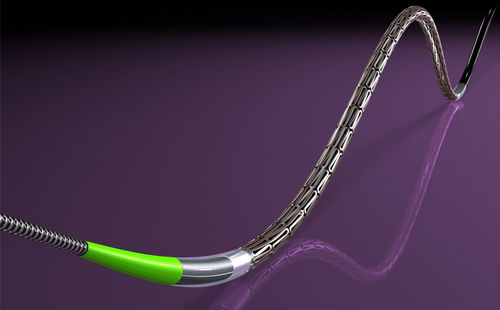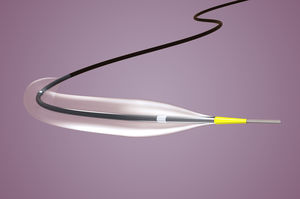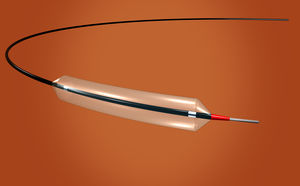
Coronary stent TITAN OPTIMAXtitaniumtitanium oxynitride-coated
Add to favorites
Compare this product
Characteristics
- Type
- coronary arteries
- Material
- titanium
- Options
- titanium oxynitride-coated
- Diameter
2 mm, 5 mm
(0.079 in, 0.197 in)- Length
7 mm, 38 mm
(0.276 in, 1.496 in)
Description
Titanium Nitride Oxide is an ACTIVE chemical compound with unique properties whose molecular structure is made of Titanium, Nitrogen and Oxygen.
Reduces platelet & fibrin deposition (1)
Minimizes inflammation (2)
Promotes endothelial healing (3)
Minimizes thrombus formation (4)
TITANIUM NITRIDE OXIDE LATE LOSS
Titanium-Nitride-Oxide is the ONLY Technology lowering Late Loss significantly versus BMS without inducing a risk of Negative Late Loss.
Both 1st and 2nd Generation DES with very low Late Loss between 0 and 0.2mm lead to a large proportion of the DES-treated population affected with negative Late Loss (30 to 50%**), territory of delayed healing, AMI, death, Late and Very Late Stent thrombosis thus making compulsory prolonged DAPT.
BIO ACTIVE STENT BIOMECHANICS
Thinner Stent System
«Balloon-like» navigability
Expanded crossing capabilities
Advanced Cobalt-Chromium L-605 Platform
Higher stent radio-opacity
Increased radial force
Lower Strut Thickness
2.01F PTFE Coated Hypotube
Extra pushability
Reduced frictions
New Thinner Tip
Excellent trackability
Better crossability
Catalogs
TITAN OPTIMAX
40 Pages
Related Searches
*Prices are pre-tax. They exclude delivery charges and customs duties and do not include additional charges for installation or activation options. Prices are indicative only and may vary by country, with changes to the cost of raw materials and exchange rates.








